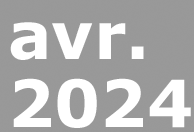|
|
||||||||||||||||||||||||||||||||||||||||||||||||||||||||||||||||||||||||||||||||||||||||||||||||||||||||||||||||
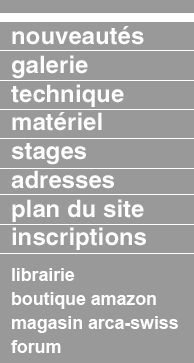
the authors
translation and adaptation
|
Ilex
lenses,
|
|||||||||||||||||||||||||||||||||||||||||||||||||||||||||||||||||||||||||||||||||||||||||||||||||||||||||||||||
|
Process Paragons |
|
|
Focal length (inches) and maximum aperture |
Coverage (degrees) |
|
|
|
|
8¼” f/6.8* |
80° |
|
9½” f/10* |
the catalog says 71°, the price list says 68° |
|
10½” f/8 |
51° |
|
10½” f/10* |
71° |
|
12” f/6.8* |
the catalog says 54°, the price list says 68° |
|
12” f/9 |
46° |
|
13” f/9 |
46° |
|
15” f/9 |
46° |
|
16” f/9 |
46° |
|
19” f/10 |
46° |
|
21¼” f/10 |
46° |
|
* In the price list that came with the catalog these lenses are called Wide Angle Process Paragons |
|
Wide Field Process Paragon
Six elements in four groups plasmat types. Optimized for 1:1.
|
Wide Field Process Paragons, all f/5.6 |
||
|
Focal length (inches) |
Coverage |
|
|
|
Inches @ 1:1 |
Degrees |
|
|
|
|
|
4⅜” |
9.25” |
55.7° |
|
5½ “ |
9.25” |
45.6° |
|
6.8” |
14.29” |
55.4° |
|
7.8” |
16.37” |
55.4° |
|
8¼” |
16.11” |
52.0° |
|
8¼” |
16.50” |
53.1° |
|
9” |
17.00” |
50.6° |
CRT and oscilloscope recording systems
Focal lengths from 0.90 inches (23 mm) to 11 inches (279 mm), maximum apertures from f/1.2 to f/4.2 (6 inches) to f/4.0 (11 inches). A multitude of design types, most double Gauss derivatives. Most are corrected for P-11 phosphor, others for P-1, P-16 and P-31. They are not well achromatized.
The used lens market offers three focal lengths of Ilex’ oscilloscope camera lenses that seem useful on large format cameras. 75/1.9; three types with, respectively, recommended magnifications of 1:0.9, 1:0.85 and 1:0.5 respectively; 80/1.3; two types, both for 1:0.5; and 88/1.4 for 1:1. All cover small angles, won’t cover 4 x 5 at their recommended magnifications, let alone at infinity.
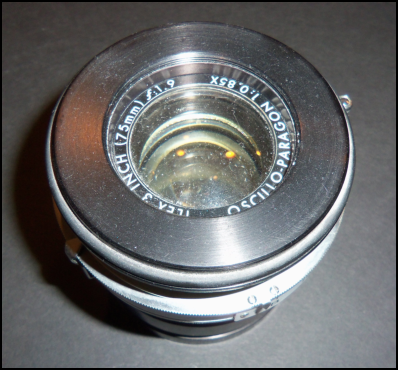
Fig. 1
75/1.9 Oscillo Paragon in #3 Ilex Universal. This lens is dusty because I don't use it. It is, for my purposes at least, completely unusable. I bought it for the shutter.
Commercial Paragon Lenses: f/4.8 Series (= Acuton)
Also called Semi-wide field Paragon lenses – convertible. Six elements in four groups convertible plasmat types, focal lengths 6”/10”, 7”/12”, and 8½”/14”. In metric, as calculated by Ilex, 150/250 mm, 180/300 mm and 215/350 mm. All f/4.8 combined, single elements are f/10. Coverage 70° combined, single elements cover 40°.
Data sheets, unknown publisher and date:
The new designs -- f/6.3 Commercial Paragon, f/4.8 Commercial Paragon and f/8 Wide Field Paragon -- were renamed Acutar, Acuton and Acugon. The data sheets add a little information that was not offered in the late ‘60s catalog. Apertures at which full coverage is reached are not mentioned.
Acutars all cover 58°. This is rather less than the equivalent Commercial Ektars, which cover ~ 64°. See http://www.bnphoto.org/bnphoto/KodakEktarsDB1.htm.
Acutons still cover 70° combined, now cover 47-48° separated.
The 47 mm Acugon is not mentioned. The remaining 65 and 90 mm wide angles now cover 102°. My set of data sheets may be incomplete.
Burke & James ~ 1973 catalog
Acutars’ coverage is given in degrees and as the image circle’s diameter. The image circles’ diameters as published are diagonals of the lenses’ recommended formats. All of the lenses are still reported to cover 58°; this gives circles larger than the recommended formats’ diagonals.
Acutons and Acugons are as in the data sheets except that the 180/4.8 is replaced by a 7½”(190 mm)/4.8.
Trade names
Acutars, Acutons and Acugons have been sold under a variety of trade names, causing considerable confusion and disagreement.
Acutar
Initially Commercial Paragon Lenses – F6.3 Series, later Acutar. Calumet sold them as Ilex-Calumet Caltar and as Caltar, not to be confused with Ilex-Calumet Caltar Series S. All of the ones sold by Calumet should be marked Ilex-Caltar (I think, could be wrong) and “Made in U.S.A.” Burleigh Brooks sold them as Acu-Tessar.
Acuton
Initially Commercial Paragon Lenses: f/4.8 Series and Semi-Wide Field Paragon Lenses - Convertible, later sold as Acuton. Calumet sold them as Ilex Calumet Caltar Series S, not to be confused with jes’ plain f/6.3 Ilex Caltar. Also not to be confused with jes’ plain Calumet Caltar Series S lenses. These are, I believe, imports. Ilex-made lenses are marked “Made in U.S.A.”, the imports were made in Germany and Japan. Burleigh Brooks sold Acutons as Acu-Symmetrical. Some, possibly all Acu-Symmetricals have maximum apertures of f/5.6 instead of f/4.8. See, e.g., http://web.archive.org/web/20170627232351/http://www.ebay.com/itm/ilex-acu-symmetrical-no-181-210mm-f-5-6-/282542719182
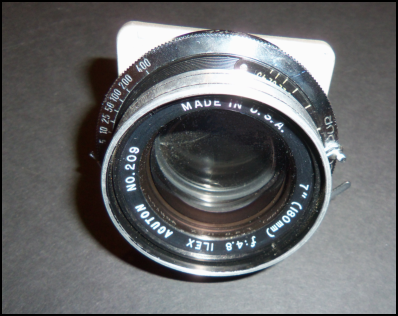
Fig. 2
180/4.8 Acuton in Synchro Compur #1. I bought it as a pair of cells
with no shutter. The new Compur’s aperture is scaled for the
cells combined (180/4.8) but not for a single cell.
Acugon
Initially sold as Wide Field Paragon, later as Acugon. Calumet sold them as Ilex-Calumet Wide Field Caltar. Burleigh Brooks sold them as Acu-Veriwide.
65/8 Acugons were sold on surveillance cameras as used in banks. Some – I have one – were in Ilex electronic shutters rebadged Opto Dynetics. Mine is not engraved with focal length, maximum aperture, maker’s name or lens’ designation.

Fig.
3
surveillance
camera version of the 65/8 Acugon as received in an Opto Dynetics
Syncnetic Model 20C electronic shutter. The late Steve Grimes said
that lens and shutter were made by Ilex. Useless as received. The
cells are now in a #00 Compur. #00 Compurs and Prontors have the same
threading as the Opto Dynetics and a longer tube length. Steve
modified the shutter for me to get the right cell spacing.
The 20”/7 Acutar’s design type and coverage
There’s conflicting information about both. The catalogs all say that the lens is a Tessar type. To the extent that there’s an Internet consensus, it is that the lens is a triplet that covers 35°. This means 320 mm, 8 x 10 with minimal movements.
Every such claim that I’ve been able to trace to the source comes from one interview with H. Lynn Jones. See, e.g., post #2 in
http://www.largeformatphotography.info/forum/showthread.php?10107-ILEX-Caltar-508mm-20-Lens and Kerry Thalmann’s comment in http://www.largeformatphotography.info/forum/archive/index.php/t-77367.html.
Against this, in the second link above Jan Pedersen reports that his lens is indeed a tessar type. As I was finishing this article the person who posts on the US LF forum as Taija71A kindly directed me to https://groups.google.com/forum/#!topic/rec.photo.equipment.large-format/yhFgb_UW0JM. The discussion contains a report on the lens from Donn Cave, who insists that his is a Tessar type. The catalogs all say that the lens is a Tessar type.
Until proven otherwise I’ll believe that the lens is a tessar type that just covers 11x 14, as the catalogs say.
Shutters
Pre-Kiner Ilex lenses were sold in Ilex shutters and in barrel. Kiner-era lenses were sold in Ilex shutters, both clockwork and electronic; Copal shutters; and in barrel. Ilex shutters don’t conform to the Compur/Copal standard. Modern Ilex Acme (cock-and-shoot), Universal (self-cocking) and Electronic shutters of the same size have the same dimensions.
|
Modern Ilex Shutters’ Dimensions |
||||
|
Size |
Maximum Aperture |
Threads |
Tube Length |
Outer Diameter |
|
|
|
|
|
|
|
01 |
0.750” |
1.0625” |
n/a |
2.0625” |
|
1 |
1.000” |
1.228” x 40 tpi |
0.940” |
2.480” |
|
21 |
1.09375” |
1.4375” |
n/a |
2.625” |
|
3 |
1.375” |
1.771” x 50 tpi |
1.024” |
3.438” |
|
4 |
1.750” |
2.350” x 40 tpi |
1.063” |
4.070” |
|
5 |
2.500” |
3.000” x 30 tpi |
1.314” |
5.156” |
1 data for pre-WW II sizes 0 and 2. all other data in this table is from the late 1960s.
http://www.skgrimes.com/library/used-obsolete-discontinued-shutters/ilex#specsheet has a fuller explanation of Ilex clockwork shutters that touches on older versions.
See
http://web.archive.org/web/20170123131058/
http://cameraeccentric.com/html/info/ilex_5.html
for a sketchy account of pre-WW II Ilex shutters’ dimensions that
includes #0 and #2 sizes. Pre-WW II shutters’ dimensions differ
somewhat from modern shutters’.
I don’t know when Melles Griot stopped making clockwork shutters. They made their IES™ version of Ilex Electronic shutters until at least 2014. Recent production (see http://www.mellesgriot.com/media/b4c4f091-419e-49e5-b1a1-07c193912877/Wr85g/FPDFs/Shutter/Brochure/2014_LR.pdf) has Ilex’ dimensions expressed in metric units. Melles Griot Type 1 corresponds to Ilex #2, Type 2 to #3, Type 3 to #4 and Type 4 to #5.
Ilex electronic shutters and Melles Griot IES™ shutters are opened and held open by a solenoid and are closed by a spring. Open voltage is higher than hold voltage. There are different pairs of open/holdvoltages so buying an Ilex or Melles Griot electronic shutter and then looking for a speed controller is a little risky. Ilex electronic shutters’ speeds are controlled by an Ilex Speedcomputer®. These are quite hard to find used but Melles Griot still sells new speed controllers. Most Melles Griot shutters’open voltage is 48vdc, hold voltage is 6 vdc. http://www.chemie.unibas.ch/~holder/shutter/ gives directions for making a DIY controller for these shutters. Older Ilex electronic shutters may have different hold and open voltages.
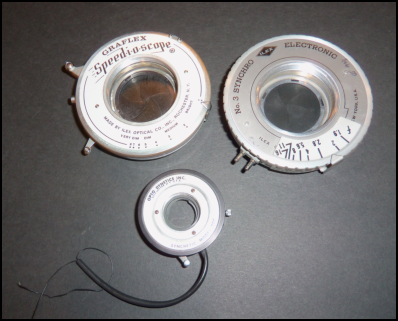
Fig.
4 My useless
little Opto Dynetics shutter, an Ilex #3 Universal from a Graflex
Speed-I-O-Scope (a tachistoscope) and an Ilex #3 Electronic. The #3
Electronic has an after-market aperture scale.
Dernière modification : 2017
|
tous les textes
sont publiés sous l'entière responsabilité de leurs auteurs |
|||||
|
|
|||||
|
une réalisation phonem |
|
||||
|
|
|||||

